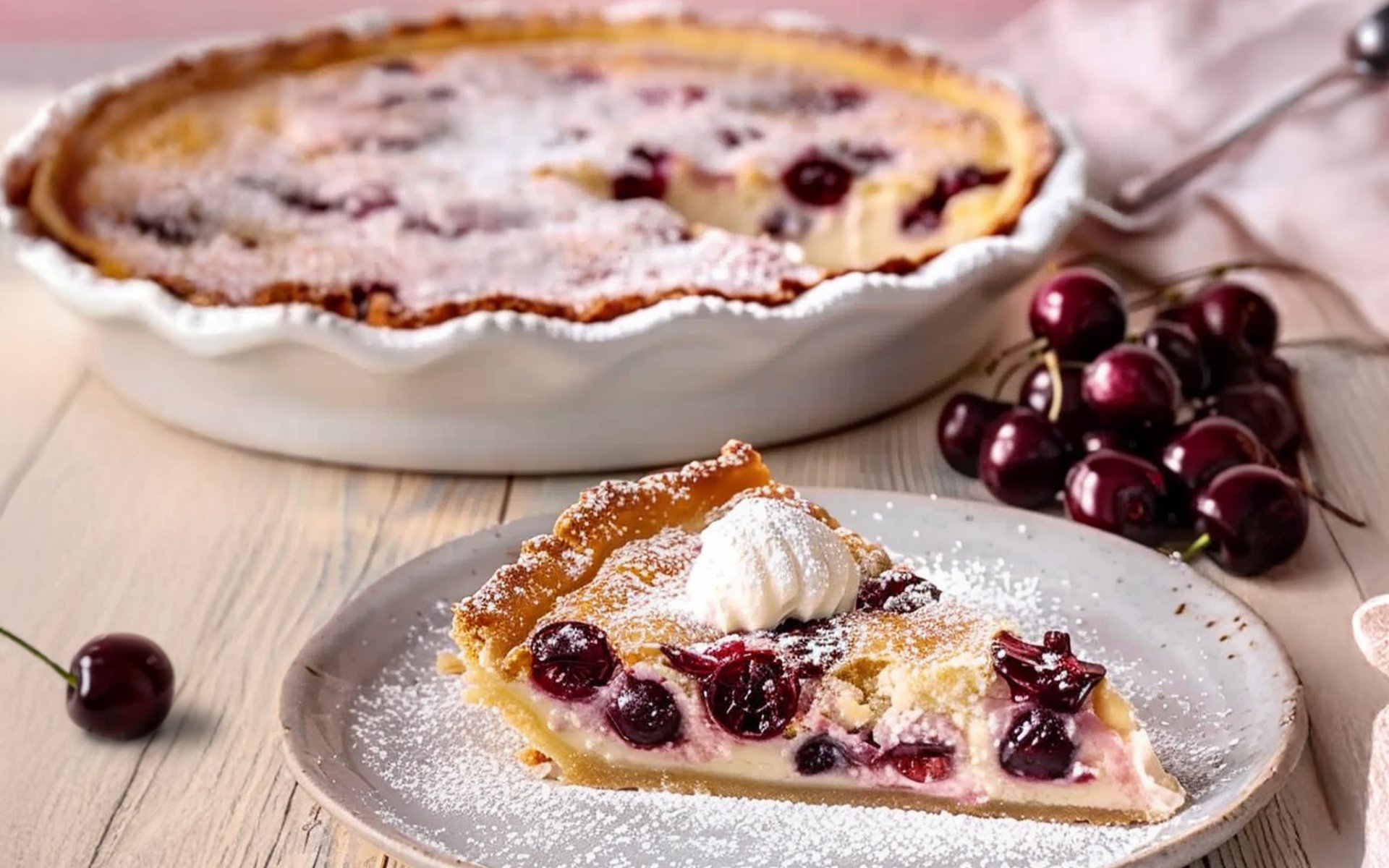Cherry Clafoutis

Origins in the Orchards of Limousin
Cherry Clafoutis is a classic French dessert from the Limousin region, where black cherries grow abundantly. Traditionally, whole cherries are arranged in a buttered baking dish, covered with a custard-like batter made from eggs, milk, sugar, flour, and salt, then baked until golden and puffed.
What Does Clafoutis Mean?
The word Clafoutis comes from the Occitan dialect, derived from clafoti meaning to fill up. It refers to the filling of the dish with as many cherries as it can hold. The name Clafoutis applies only when cherries are used; when made with other fruits like apples or plums, its called a Flaugnarde.
History and British Parallel
A similar dish appears in Plain Cookery Book for the Working Classes by Francatelli (1852) under the name Batter and Fruit Pudding, likely influenced by the French Flaugnardes, or even earlier pudding recipes from the Middle Ages in Aquitaine.
Why Leave the Pits In?
Traditional Cherry Clafoutis uses whole black cherries with pits intact. Why? Because the pits release benzaldehyde, imparting a subtle almond-like aroma and bitterness. They also help preserve the fruits shape and prevent the custard from becoming watery.
Part of French Country Cuisine
Clafoutis is now a symbol of Rustic French Cooking seasonal, local, and made with pantry staples. It serves as:
- Breakfast
- Brunch
- Dessert (served warm or room temperature)
Usually dusted with powdered sugar, and optionally paired with whipped cream or vanilla ice cream.
Modern Variations
Todays Clafoutis may include
- Red or pitted cherries
- Added vanilla or almond extract
- Smaller servings in ramekins
- Paired with frozen cream or flavored sauces


